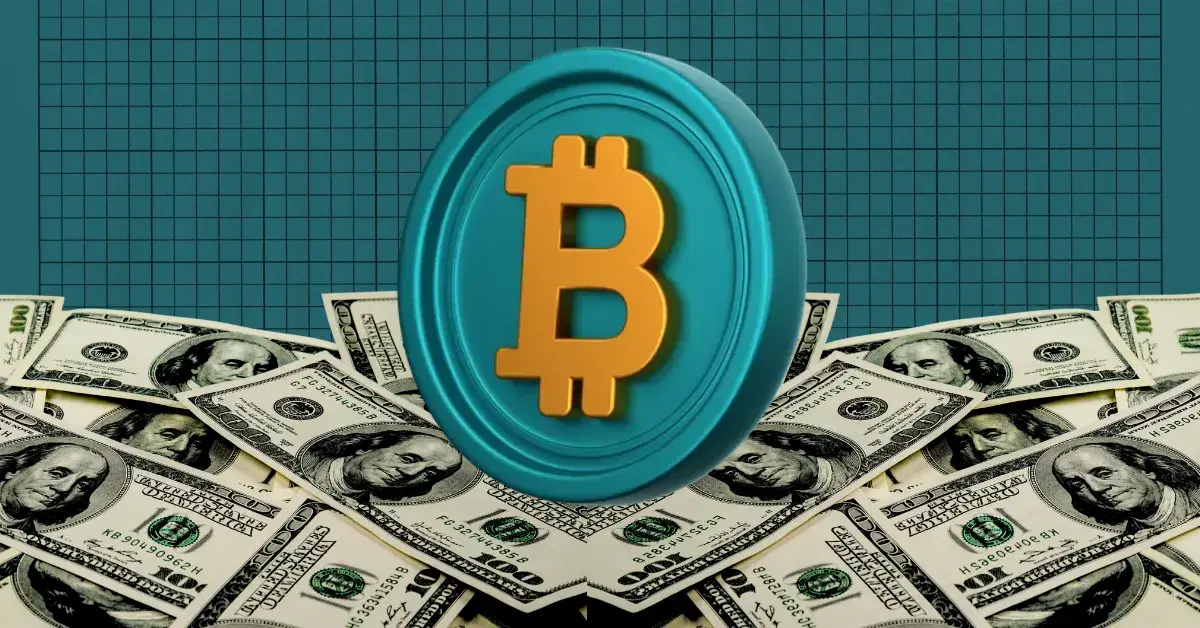Peter Brandt Dismisses Bitcoin Breakout, Says Trend Not Yet Reversed
16.04.2025 17:00 2 min. read Alexander Stefanov
Bitcoin briefly surged past $86,000 on Tuesday, reaching levels not seen since early April, before slipping back slightly.
The move coincided with renewed interest in digital assets following a high-profile meeting between former U.S. President Donald Trump and El Salvador’s President Nayib Bukele. Speculation swirled around Trump’s broader economic strategy, including possible plans to build up Bitcoin reserves using tariff revenue.
Investor sentiment was also buoyed by data showing large holders—known as whales—have resumed accumulating Bitcoin. Glassnode reports that wallets containing between 1,000 and 10,000 BTC have grown significantly since early March, a trend last seen ahead of a major rally in April 2024.
That resurgence in whale activity comes as gold continues to hold firm and market volatility, measured by the VIX, remains subdued.
From a technical standpoint, Bitcoin has broken above a long-standing descending trendline, a move that typically signals a potential shift in direction. However, not everyone is convinced. Veteran trader Peter Brandt downplayed the significance of the breakout, arguing that trendline breaks alone don’t confirm reversals. In his view, only a consistent close above $88,000 would validate a full recovery from this year’s pullback.
Despite the cautious take from Brandt, optimism is growing across the broader crypto space, with coins like Solana and XRP also gaining traction. Whether this momentum holds or fizzles will likely depend on macro developments and how key resistance levels are handled in the days ahead.
-
1
Bitcoin: Is the Cycle Top In and How to Spot It?
09.07.2025 16:00 2 min. read -
2
Crypto Inflows hit $1B Last Week as Ethereum Outshines Bitcoin in Investor Sentiment
07.07.2025 20:30 2 min. read -
3
Public Companies Outpace ETFs in Bitcoin Buying: Here is What You Need to Know
02.07.2025 12:30 2 min. read -
4
Robert Kiyosaki Buys More Bitcoin, Says He’d Rather Be a ‘Sucker Than a Loser’
02.07.2025 22:00 1 min. read -
5
This Week in Crypto: Whale Accumulation, Ethereum Signals, and a Sentiment Shake-Up
05.07.2025 21:00 3 min. read
Over $5.8 Billion in Ethereum and Bitcoin Options Expired Today: What to Expect?
According to data shared by Wu Blockchain, over $5.8 billion in crypto options expired today, with Ethereum leading the action.
IMF Disputes El Salvador’s Bitcoin Purchases, Cites Asset Consolidation
A new report from the International Monetary Fund (IMF) suggests that El Salvador’s recent Bitcoin accumulation may not stem from ongoing purchases, but rather from a reshuffling of assets across government-controlled wallets.
Ethereum Sparks Altcoin Season as FOMO Shifts Away From Bitcoin
Traders are rapidly shifting their focus to Ethereum and altcoins after Bitcoin’s recent all-time high triggered widespread retail FOMO.
BSTR to Launch With 30,021 BTC, Becomes 4th Largest Public Bitcoin Holder
BSTR Holdings Inc. is set to become the fourth-largest public holder of Bitcoin, announcing it will launch with 30,021 BTC on its balance sheet as part of its public debut.
-
1
Bitcoin: Is the Cycle Top In and How to Spot It?
09.07.2025 16:00 2 min. read -
2
Crypto Inflows hit $1B Last Week as Ethereum Outshines Bitcoin in Investor Sentiment
07.07.2025 20:30 2 min. read -
3
Public Companies Outpace ETFs in Bitcoin Buying: Here is What You Need to Know
02.07.2025 12:30 2 min. read -
4
Robert Kiyosaki Buys More Bitcoin, Says He’d Rather Be a ‘Sucker Than a Loser’
02.07.2025 22:00 1 min. read -
5
This Week in Crypto: Whale Accumulation, Ethereum Signals, and a Sentiment Shake-Up
05.07.2025 21:00 3 min. read


